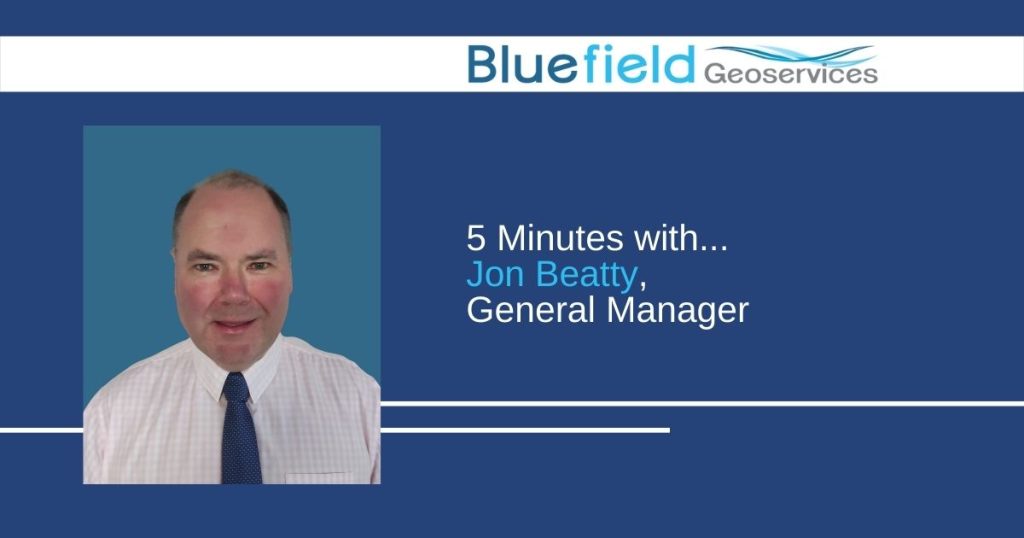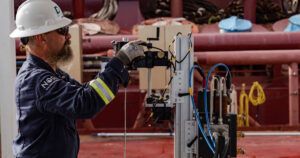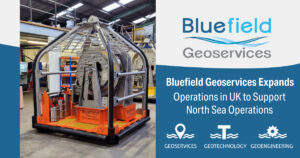Besides Bluefield Geoservices’ custom geotechnologies and geoengineering solutions, the team’s differential is the breath and caliber of professional experience. In a series of short Q&As, we shine a spotlight on the experts Redefining Geoscientific Frontiers.
How did you get started in the subsea industry?
As a kid, I loved gadgets – I used to make crystal diode radios and radio-controlled aircraft engines. So, I knew I wanted to somehow fuse my passion for technology with the lure of the offshore world. I graduated college with a degree in marine electronics and communications engineering and was soon signed up as a graduate field engineer trainee for an energy services company, Schlumberger Limited. The rest, as they say, is history – I have spent the last 26 years circumnavigating the globe trying to leverage breakthroughs in subsea technology to solve complex offshore challenges.
My uncle was stationed at RAF Lossiemouth in Moray, north-east Scotland as a pilot flying Nimrod aircrafts over the North Sea. I used to spend the Christmas holidays there as a child back in the 1970s. The area was home to many of the early offshore oil and gas workers, or “North Sea Tigers” as they were known, and their stories of offshore development left a huge impression on me. From the age of 11, I knew that working in the offshore sector was the only career for me.
What projects and technologies have had the greatest impact on you over the years?
On a professional level, the field of geophysics—particularly the advancement over the last couple of decades in geophysical acquisition, computing power, and data processing algorithms—has been an inspiration. The tech-assisted ability to explore our planet’s oceans—from the shallows to the deepest chasms—still blows my mind today. Without it, much of what has been achieved in the world of offshore energy and construction would have been significantly more hazardous, less productive, and ultimately too prohibitively expensive to undertake. When I first started out in the 1990s, standard survey operations involved a large vessel towing one very small, short sensor array, which ultimately rendered a 2D slice through the earth. Data processing took months—sometimes years! 21st century marine engineering, however, has given us ever more agile vessels, which can deploy unmanned surface vehicles (USVs) and autonomous underwater vehicles (AUVs) to capture massive 3D imaged swathes of the seabed in an increasingly cost-effective manner. Geophysical measurements are far more accessible these days and represent an essential aspect of the site investigation and characterization toolbox.
Personally speaking, human organ transplantation, and the incredible advancement in anti-rejection drug therapy. I am highly indebted to Dr. Thomas E. Starzl (often referred to as “the father of human transplantation”), the surgeons and staff at King’s College Hospital London, and one selfless transplant doner and their family. My Mother was diagnosed with a slow but highly degenerative liver condition early in her life and by the age of 58 she required a liver transplant. She was one of the few fortunate enough to be allocated a matching doner (sadly the person had died in a road traffic accident) and subsequently received the successful organ transplant. This wonderful innovation afforded her an additional 20 happy and healthy years!
What, in your opinion, does the future hold for offshore development?
Speaking as a marine geoscience geek, the future is certainly bright! Earth’s population continues to grow and, as a result, so does our collective need to harness energy and build essential infrastructure, responsibly: we need low carbon solutions. The oceans offer some of the most bountiful energy resources on the planet. For as long as that remains the case, the world needs more marine geoscience expertise to characterize, design, and engineer the “routing and footing” associated with these abundant opportunities. We are in the business of offering innovative robotic offshore site investigation geo-solutions to gather and interpret Petabytes of data and physical soil samples to assist in the next phase of offshore development. We get to do all of that and play a huge role in mitigating climate change. As far as offshore development goes, the future is what we make of it.


